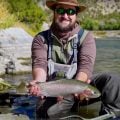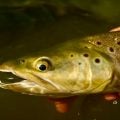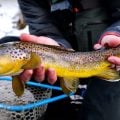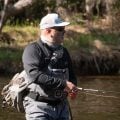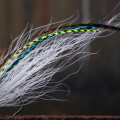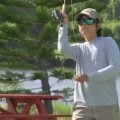How to Tie the Northern Magic Pike Fly
Written by Dwayne “Chip” Cromarty, Cree River Lodge
In the fly-fishing world, “guide flies” are patterns that are usually easy to tie, durable, and catch fish. Because losing flies is a part of guiding, you don’t want to make a huge investment in each one. My Northern Magic streamer is one such “guide fly.” With just two materials and three tying steps, it’s a fly that can be tied in a couple minutes. It’s fairly durable (especially when finished with an epoxy head), swims well, and is easy to cast, so it pretty much checks all of the boxes. I have been using this fly for almost 40 years now, and it is still among the most effective flies in my box. I now tie the brush version more often because it’s more durable, but there is very little difference in how they fish.
When I started guiding in the mid 1980s, fly-fishing for pike was in its infancy. There were suitable rods,reels, and lines, but not much in the way of fly patterns. In fact, the first fly I ever caught a pike on was a deer-hair mouse, designed for Alaskan rainbow trout.

The original bucktail Northern Magic (top) and the newer dubbing-brush version.
Very quickly, I learned that I would catch more fish with streamers than with topwater patterns. When fly fishing in clear, shallow water, you get to see almost everything anyway, so underwater eats are often as exciting as topwater hits. My first patterns mostly used fur strips scavenged from old coats and hats I purchased at the Salvation Army store. These patterns caught fish, but they were horrible to cast. In addition if I didn’t set them out to dry, they would stay wet in my fly box for days, often causing the hooks to rust. Material options were somewhat limited in those days, especially for a guide located in northern Saskatchewan. Bucktail, saddle hackle, marabou and various types of fur strips were pretty much it. The feathers were not very durable, and I didn’t really like fur much for the aforementioned reasons, so when a guest introduced me to Fishair (a synthetic nylon fiber), I immediately saw the possibilities. It was far more durable than my other options, and didn’t hold water. The Northern Magic was born.
The profile of the Northern Magic provides a balance: it’s big enough to offer the appearance of a healthy meal and streamlined enough to cast easily. Tying the bucktail in the round gives more micro movement, and it slows the sink rate significantly. The Fishair tail undulates as the fly is stripped through the water. The result is a fly that can be fished fast or slow, as the situation dictates.
Northern Magic
Hook: O’Shaughnessy heavy-wire hook (here, a VMC 9255PS), size 4/0.
Thread: Black, 3/0 or 210-denier.
Tail: Feather Red FisHair, 70-denier.
Body: Black bucktail.
Recently, I have been tying a lot of patterns using dubbing brushes. (You can make your own or buy them.) Wire and synthetics make for an incredibly durable fly. The wire is impervious to a pike’s teeth, and once it is palmered over the shank of the hook, the brush protects the thread wraps underneath. Using synthetics does eliminate the buoyancy I was getting from the bucktail, but the mix of materials in my brushes provides profile and movement in a fly that is 10 times more durable. The dubbing-brush version of the Northern Magic is an effective pattern that belongs in every pike fly fisherman’s fly box.
Click here to learn more about Cree River Lodge
OR
